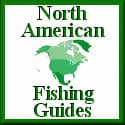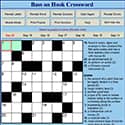Bass on Hook is Supported by our readers. As an Amazon Associate We earn commissions from qualifying purchases. For more informtion read our Amazon Affiliate Disclosure and Affiliate Disclosure Policies.
What To Do When It Goes Bad - Part 4 of 4
(Murphy's Law Re-Defined)
By Dennis Bryant "The Fishing Professor"
"Quick, Basic, Spinnerbait And Buzzbait Repairs on The Water"
(With the same simple tools used to adjust your lures at home)
We've gone through what a spinnerbait & buzzbait is and why.
We've also covered what could go wrong with them and why.
Last time, we covered how to tune up your spinnerbaits and buzzbaits before you hit the water.
Today after I answer a couple of questions about the last article we're going to discuss how to make repairs and adjustments to your spinnerbaits and buzzbaits while you're out on the water for a days' fishing.
The first question that I was asked about was:
What was wrong with a spinnerbait that seemed to run true but couldn't effectively hook a fish without adding a trailer/stinger-hook?
Answer:
50% or more of what's become known as "short-strikes" are a result of the fish meeting the resistance of the upper arm (blade-arm) of the spinnerbait when it effectively acts as a "hook-guard" over the point of the hook.
A second possibility might be that the wire used in the making of the lure is so heavy that the fish during its 'attack' couldn't bend the blade-arm enough to become impaled on the bait's hook.
To eliminate the "over-long blade-arm", follow the instructions in step #3 of the last article.
Shorten the blade arm to a point no longer than the barb of the hook.
If the wire is X-tra-Heavy shorten the upper (blade-arm) arm so that it ends about 3⁄16 of an inch in front of the point of the hook and bend the two arms just a little bit closer together.
The second question was:
How to fix a new spinnerbait that has a tendency to lay over on its side or sometimes even spin when it's being retrieved?
Answer: Three different things are possibly wrong here.
Both the upper and lower arms are too long.
Too big of a blade or blades are being used for the size of head (weight).
The spinnerbait is being retrieved too fast for its overall construction.
Solve the problem simply by correcting the possible problems above in reverse order.
Slow the retrieve on the lure.
Reduce the size of the blade(s).
But if neither works, discard the lure.
The shortening of both the upper and the lower arms destroys the integrity of the lure.
It becomes what it really always was (a $2 'garbage-barn' lure).
Spinnerbaits And Buzzbaits ~ On The Water Repairs And Adjustments
Tools Needed:
1 pair of Stainless steel, box-jaw, Fisherman's Pliers
1 pair of hands
1 pair of eyes
Most, if not all Spinnerbait & Buzzbait repairs necessary on the water can be accomplished with this single tool and a very little amount of time.
To make a spinnerbait or buzzbait run true or to correct a "mangled" light-wire lure:
Hold the lure by the line-attachment point with your pliers and line up the hook point, the blade-arm and the line attachment point.
Make whatever bends are necessary to do to line all three points up with the slot of the pliers.
Re-form the triangular shape of the Spinnerbait or the rectangular shape of the Buzzbait as necessary.
To allow a spinnerbait to be fished "faster" without "turning-over":
Simply bend the blade-arm and the hook-arm closer together (Remember: under no circumstances is the blade-arm ever to be bent so far as to become a hook-guard).
To change a skirt on a Spinnerbait or Buzzbait:
Use your pliers to remove the old skirting.
Moisten the rubber ring on the replacement skirt (a drop or two of saliva or just plain water will work just fine).
Use your pliers to spread the ring and place it into position on the lure.
Adjust the strands to cover.
Release and withdraw the pliers.
Trim the skirting materials as necessary.
To change a blade or to change a complete swivel/blade combination:
Using your pliers, open the split ring slightly and withdraw the old blade just a little through the opening in the ring.
At the same time place the new blade in the same slot and continue to follow the old blade.
The new one will go on while the other comes off.
To change the swivel, the same procedure can be followed to open the split ring for removal of the old swivel and also for insertion of the new swivel.
Opening and closing of the blade-arm swivel-attachment bend, on other than a stainless-steel shaft is asking for trouble and should be avoided to reduce the risk of wire-fatigue.
To quickly re-sharpen a dulled hook:
With the pliers closed drag the hook-point over the flat-edge in the corner of the box-joint on the pliers.
This will not only re-straighten the hook-point but when done correctly will act as a 'steel' to sharpen the point (The joint-edge of a closed pocketknife will accomplish the same thing just as well).
Summarizing Spinnerbaits And Buzzbaits On The Water Repairs
Don't Forget The Most Important On The Water Repairs That Can Be Made By Any Fisherman, Everytime And Everywhere:
Always Use Fresh, Good Quality Line!
Re-tie Your Lure Regularly!
Such a small price to pay for such a big benefit.
Don't lose that "fish of a lifetime" because of your choice of not retying your lure after a catch.
The difference between the cost of cheap line and good line can be measured in mere pennies.
Or it can be measured by the loss of a memory that would have lasted a lifetime.
GOOD FISHIN'!
Dennis Bryant
The Fishing Professor
Look for other articles written by Dennis Bryant in The Fishin Professor's Pro Staff Angler Profile










